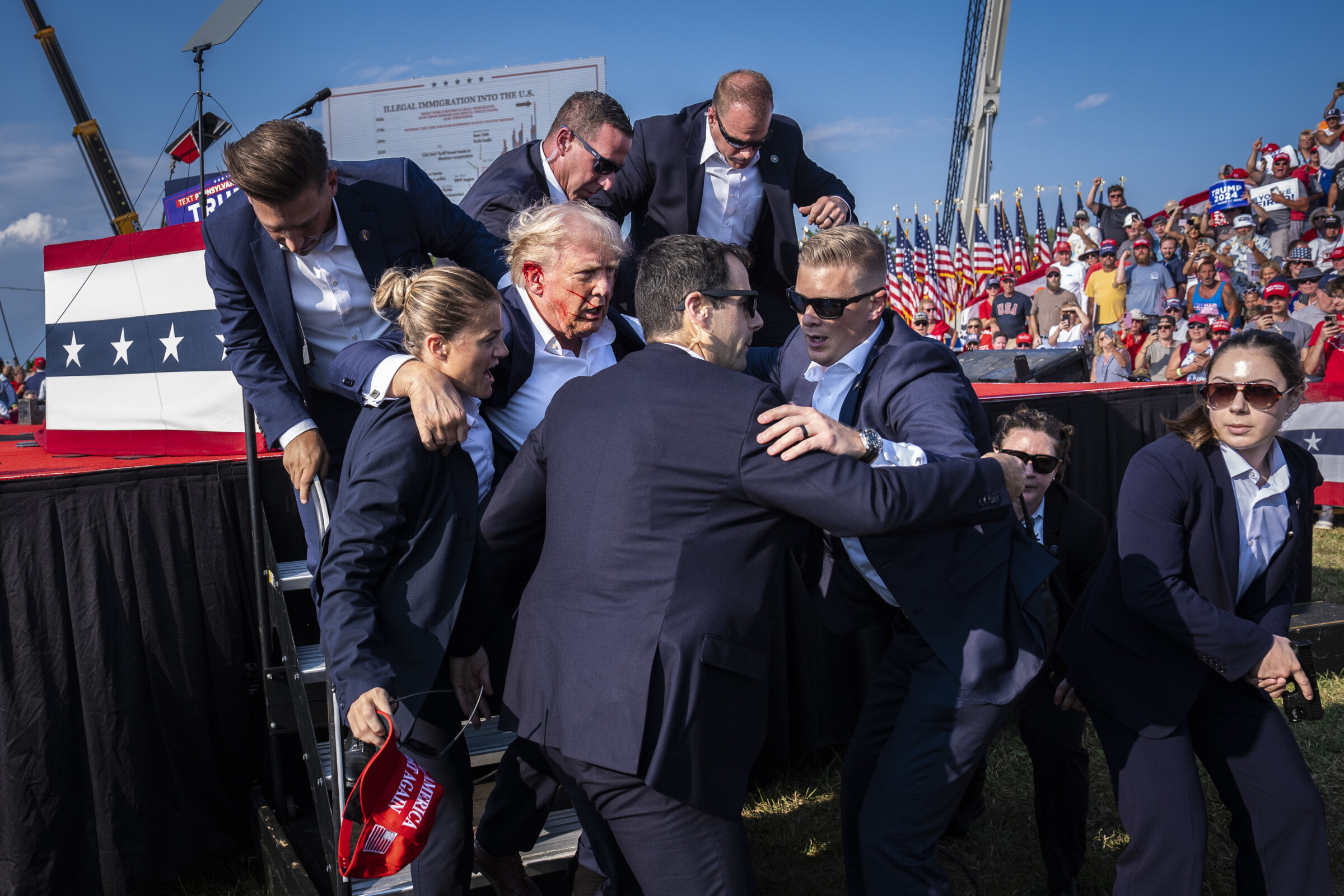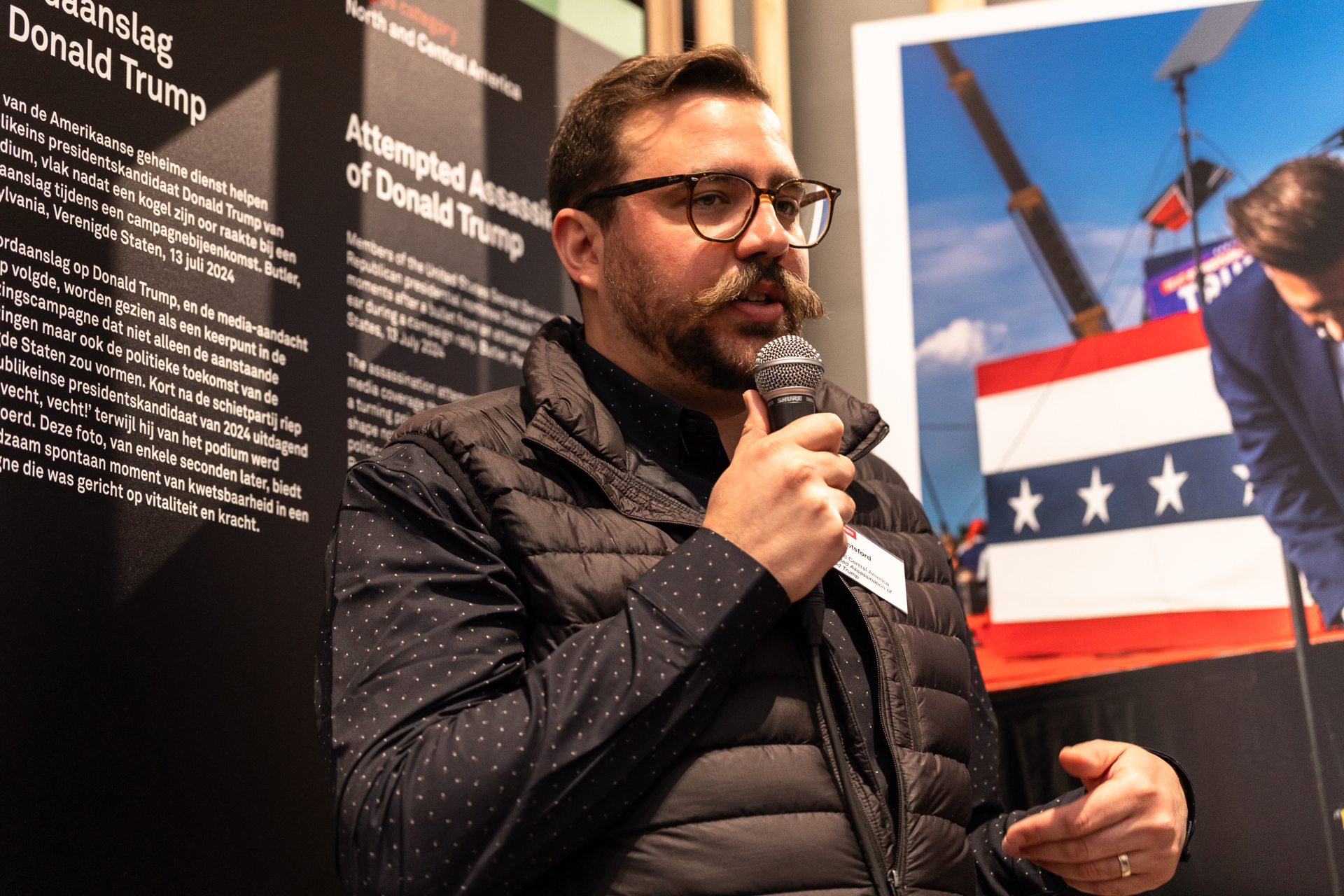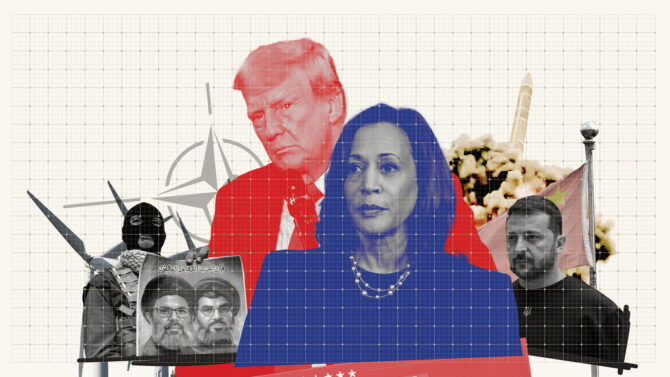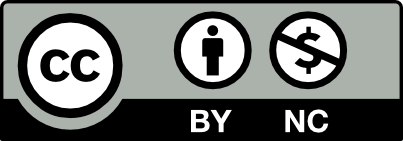Award-winning Washington Post photographer Jabin Botsford spoke to iMEdD about the story behind the photo of Donald Trump’s assassination attempt.
It was mid-July 2024, when photographer Jabin Botsford was asked to cover a speech by -then- presumptive nominee of the Republican Party and former President, Donald Trump in Butler, Pennsylvania. The campaign rally was scheduled for July 13 – the day after the photojournalist’s 33rd birthday and two days before his next assignment at the Republican National Convention, so he wasn’t much in the mood to go. Botsford had been covering Trump and U.S. politics for The Washington Post for almost a decade and figured it would be just another campaign speech like so many he’d covered before.
But some Trump staffers had hinted the announcement of the ticket’s Vice-Presidential nominee. So, despite the high temperatures, Botsford found himself on the scene.
When the photojournalist heard gunshots, later proved to have been fired by 20-year-old Thomas Matthew Crooks, one thing went through his mind: “I need to see Trump’s face.” In the two minutes that went by before Trump was evacuated, Jabin managed to see the now 47th President for about 20 seconds.
It proved enough to take the photo that earned him a World Press Photo Award for North and Central America Region and a Pulitzer Prize—the latter as part of The Washington Post team that covered the unfolding events of the assassination attempt on Trump.
Ten months later iMEdD caught up with Botsford at the World Press Photo awards ceremony in Amsterdam.

What do you think of the “Impact vs Award” dilemma?
I care far more about the impact of my work than I do the awards. For me, awards are just a validation of the hard work that hopefully already reached the audience that I was looking for. World Press Photo is great because it takes my work to a much larger audience that may not have seen it.
I mean, especially for the assassination attempt specifically, there were four of us, four photographers up front and everybody have made amazing pictures and everybody has received accolades for them in different places. But for the United States, you know, they really grabbed on to the American flag pictures and things like that.
So it is exciting to see what the rest of the world thought was important and just that outside perspective from other places, because it’s America, we live in such a bubble sometimes.
Let’s go back to the 13th of July, 2024. What was your first reaction when you heard the gunshots?
I had just been behind on the back side of the stage and the campaign press people were like, do the photographers feel like you have enough? And I told him; I don’t have any close up shots. So I said, let me go around front to the stage and shoot a couple more.

And so right as I went to the front, I heard the shots and I didn’t really understand what it was. I was kneeling and I stood up and I looked around very confused and then he fell. And so as soon as he fell, I knew something was wrong. I didn’t know what, but I knew something was wrong. And my first thought was I’m holding the wrong camera as a photographer. I panicked and I quickly switched cameras and changed my settings and I just went towards the stage because he had fallen and I couldn’t see him anymore.
I knew that if the most historically significant thing I might ever see is happening in front of me, I am going to get a picture of it.
Foreign aid freeze decimates investigative news outlets internationally

Investigative news organizations across the globe are scrambling to survive and fearing a backlash from authoritarian regimes following the Trump administration’s foreign assistance freeze and other moves to dismantle the U.S. Agency for International Development.
What’s the one thing you remember most vividly from that day?
It’s funny to think about it with like time and perspective. Because the longer time goes on, you understand more about what happened and how, ultimately affected US politics. For me, it was just one thing I’m going to remember most. To see somebody almost die and somebody in power almost die right in front of you. It’s crazy to think about what could have happened in a different scenario and what that might have done for the country in so many different ways.
It was pure adrenaline. I’ll always remember seeing him being carried away and throwing his first up in defiance and the crowd’s response to that. I hope I never see anything else like it again. It was scary.
Democrats and comms experts said that as soon as they saw pictures coming out from the assassination attempt they thought the election was called for good-that it was “game over”. Do you agree with that?
I would say that Donald Trump is a master of understanding his brand and marketing and the power of an image. And I think he and the whole country knew that with such powerful images that he could use for his campaign, that, you know, it’s a certain amount of political power that you can’t get any other way. I think we’ve seen this over history, people who’ve survived assassination attempts. It reminds people that maybe they will fight for them.
That’s the power of image in shaping politics, right?
Of course. For me, I’ve covered politics for a long time, and a lot of it is, you know, being told where to stand and they put the flag right behind the podium. It’s very curated. But my goal is always to show just like the brief moments of reality because ultimately these, no matter who it is, they’re still people and they have feelings and emotions it’s not always polished – there is reality.
And so, I am very honored by the World Press Photo choosing this picture because, I feel like it shows the reality and the vulnerability of not Donald Trump as this political figure, but Donald Trump as a person, as a human who was just shot and tackled by 10 Secret Service agents.
You covered Trump during both his first and second terms. What changes have you witnessed in the field covering the President this time-in comparison to the previous term?
Donald Trump and his campaign has always been like very publicly outspoken towards journalism and the media. But they also are very good at using the media to share what they want to share. They understand the power of an image I think better than most political movements. And they’ve always worked very well with photographers.
For me and for all the photographers who cover him, it’s been such a unique opportunity to get more access and create more interesting visuals than a lot of other previous presidents. It seems like every administration just for the last 20 years the photography access continues to be less.
And just between the two Trump administrations, I’d say the first one, it was extremely open to photography. We photographed especially at the beginning, maybe 5 plus events a day at the White House. Now the second term, it’s become much more closed. They are just not showing quite as much. But still, more than Obama did and more than Biden did. They show they appreciate photography and they allow more pictures than others in the past.
Why do you think there is this difference?
I think they have made it back into office for a second time and they don’t care quite as much about the reporting around them. They are very much on their mission and their political movement. They are not going to let anything slow them down. And so there’s no real incentive for them to continue to give lots of access. But that being said, it’s still more access than anybody else gets. Τhey are very open to photography in a way that most politicians are not. So that’s been very unique.
US Elections: Two Scenarios for Five Crises

How the outcome of the US elections will will have significant implications for five major international crises, according to analysts speaking to iMEdD just days before November 5.
Again, that’s because they understand the power of imagery, right?
Yeah, of course. I cover all types of politics in the United States, and this is always my conversation, trying to get access along the way. Being more open and showing pictures of what you’re doing really can only help everybody understand what’s really going on.
And especially working for The Washington Post, it’s my job to show Washington and the United States and really the rest of the world who these people really are. We get a million pictures of somebody at a podium, but that doesn’t really tell you all that much. It is a small picture that follows the story and we write 1000 stories. It doesn’t really do anything. But explaining the ability and unique opportunity to show who somebody really is, not just on a stage or in front of a podium, that’s what matters.
Showing Trump behind the suit
Yeah, exactly. Because that’s ultimately what we all need to see. We all need to know who these people really are so that everybody can make their own informed decisions. It’s not my job to steer anybody one way or another. I just want to show somebody as realistically and as humanly as possible and leave that up to everybody else to decide what they feel about it.
I have been covering Trump for 10 years. I have pictures, this one (ed. note: the one from the assassination attempt) and many others, where I have people who are far left and they come and they say “That’s such a good picture. You made him look so bad.” And then I have people on the far right who look at the same exact picture and say, “That’s the most amazing picture of Donald Trump. He looks amazing.” And for me, that’s like a huge compliment because I don’t want one side or the other to take my image and use it for something. Everybody is always going to bring their own opinion to what they’re seeing. I do my best to just show it as I saw it, which, of course, is easier said than done.
Cover Photo by Maarten Nauw

